Breeding options for black currant

Black currant is one of the healthiest and most delicious berries. In almost every summer cottage, garden or local area, one or more black currant bushes can be found. This berry is truly multivitamin, yet it is packed with vitamin C. There is 8 times more of this useful substance in currants than in lemons and 10 times more than in apples.

How to propagate by dividing the bush?
When growing black currant, gardeners and gardeners are faced with the problem that the bushes of this plant cannot be called durable. Initially, they are actively growing, and the yield increases from year to year. After a few years, a period of optimal condition begins, after which the number of berries begins to decrease. Therefore, the issue of breeding black currant is quite relevant.
Reproduction of black currant by dividing the bush is the fastest method. This method can be used in the case of transplanting a productive plant to some other place. This operation should be carried out in the spring or autumn.
First of all, you need to carefully dig out the parent currant bush. It is very important not to damage the plant's root system. It is required to remember that the roots of the currant go into the ground approximately to a depth of 40-50 centimeters. After digging up the bush, the rhizome must be carefully freed from excess soil, and damaged parts of the roots and dry branches must also be removed.

The next step is to divide the bush. One adult plant can be divided into 2-4 parts. The specific number of parts obtained depends on the size of the parent blackcurrant. The procedure is carried out using a sharp garden tool. Moreover, each new part must have a formed root system that can ensure successful rooting. And also on the resulting part of the bush there should be several new shoots.
To disinfect separated blackcurrant bushes before planting, it is recommended to treat them with a manganese solution. You can plant bushes in any part of the garden or garden, but still, it is better to give preference to sunny areas. The first harvest of useful berries after multiplication by division can be obtained the next year.
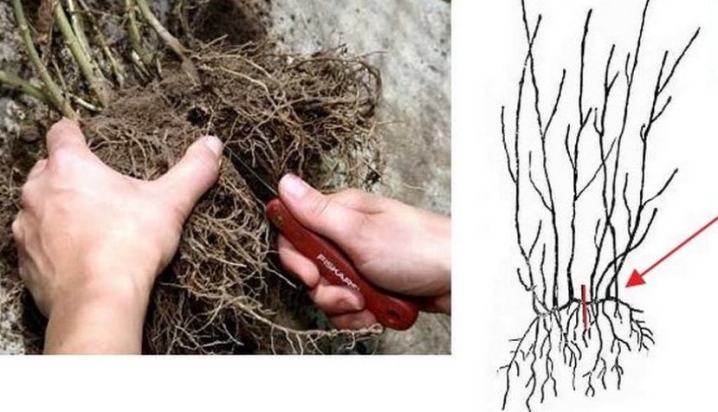
Propagation by cuttings
Black currants can be propagated using cuttings. This method can be used in different ways, namely:
- reproduction by lignified cuttings;
- breeding with green cuttings;
- reproduction by apical cuttings.

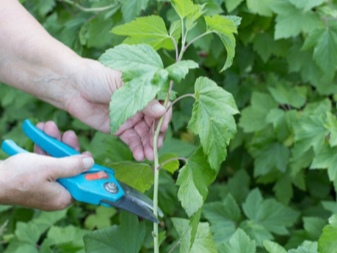
The use of lignified cuttings allows you to get several good seedlings from one branch of the mother bush. This method is considered to be very effective and reliable.
First of all, you need to harvest lignified cuttings. It is best to do this in the fall or spring. Moreover, in the spring, stocks of cuttings should be done during the pruning of black currant bushes. For this purpose, it is necessary to choose a strong, healthy branch, which is one or two years old. The diameter of the selected branch must be at least 6-7 millimeters.
Next, you need to cut off the branch with a pruner or a very sharp knife and remove its top. After that, the branch should be divided into separate parts, the length of which is approximately 20-25 centimeters.Above, at a distance of 1 cm above the location of the kidney, a cut should be made in a straight line, while under the lower kidney there should be an oblique cut.

Before planting, all currant cuttings should be kept in water with a temperature of about 45 degrees for 15 minutes. This will help disinfect them. For planting, it is necessary to prepare grooves for planting, the depth of which is 15 centimeters. The ground must be dug up and well moistened. The plant is placed at a distance of about 15 centimeters from each other, and the distance between the rows should be about half a meter. Above the surface of the soil, it is required to leave two buds, one of which should be located at the level of the soil.
The planting site must be covered with fertile soil and pressed tightly against the currant cuttings. Planted plants must be mulched with peat chips and a 5 cm layer of humus to maximize moisture retention.
It is correct to plant cuttings of black currant obliquely, while the direction is from north to south. This arrangement allows for better illumination of the rows.

If the lignified cuttings were not harvested in a timely manner, then black currants can be propagated using green twigs. To maximize the vitality of cuttings, it is best to harvest them in cool weather, without bright sunlight. Preference should be given to twigs that are elastic and do not break if bent. The length of each cutting should be about 20 centimeters and contain 3-5 leaves, the lower leaves should be cut off. It is necessary to cut the branch straight from the top, and from the bottom along an oblique line.
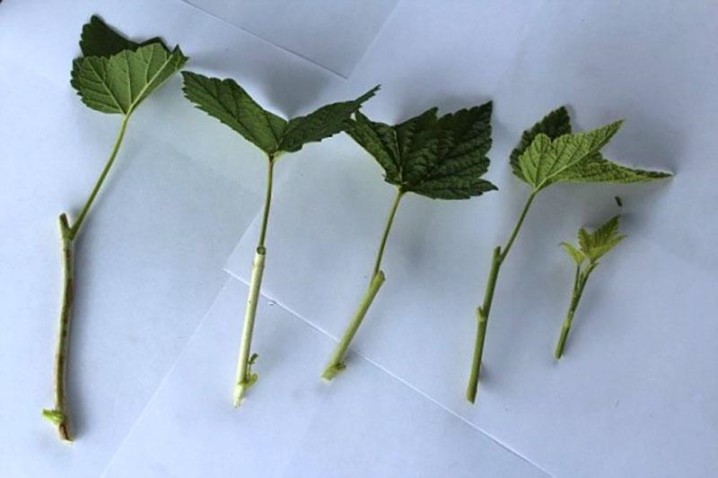
Rooting is carried out in a mixture of sand from the river and rotted compost (1: 1 ratio). In this case, it is worth observing the distance between the cuttings at least 10-15 centimeters. Adequate moisture must be provided after disembarkation. Therefore, in addition to watering, planting is required to be sprayed every day for the first two to three weeks. Cuttings root best at a temperature of +25 degrees. It is recommended to cover the plantings with foil to avoid direct sunlight and excessive drying. After successful rooting, it is worth fertilizing the plantings with a solution of urea at the rate of 1 tsp. for 5 liters of water. Such feeding is carried out once every 10-12 days.
Another type of vegetative propagation of black currant bushes is the use of apical cuttings. This method is used if there is a lack of raw materials for planting. The survival rate in this case is somewhat lower, and the cuttings may die from drying out.
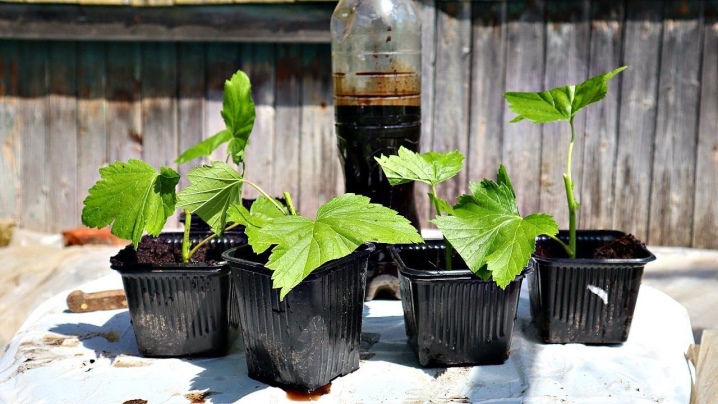
How to spread with layering?
Cutting propagation is a simple and very effective method of producing good seedlings. This method provides almost 100% survival rate with minimal maintenance. Dilution of black currant by layering can be carried out in three different types of layering:
- horizontal directly on the ground;
- vertical;
- arcuate.

Horizontal
Horizontal layering involves laying a branch of an adult bush in a previously prepared furrow. Cut off the top of the dug-in branch. Thanks to this breeding option, you can easily get not only one, but several separate seedlings at the same time from a single buried branch of the mother bush of black currant. This method can be applied before the leaves begin to bloom.

Vertical
Breeding currants with vertical layering also allows you to simultaneously get several seedlings from one parent plant. The essence of the method lies in the fact that new shoots begin to grow from the buds, which are located in the lower part of the currant bush.
The propagation process by vertical layers consists of several separate stages.
- It is required to select one young healthy black currant plant, from which in late March or early April you need to cut off the existing branches, leaving small thorns a little less than 10 centimeters long.
- By the end of the spring period, shoots begin to appear on the thorns. When new shoots reach a height of about 20 centimeters, they need to be covered with moist soil at half their height. After 4-5 weeks, another bedding is required, due to which the formation of roots will occur faster.
- At the beginning of the autumn period, shoots that have taken root must be separated from the mother bush. They can be weak or strong. Strong shoots with a developed root system can be planted immediately on a permanent site. If the shoots are weak, then they need to be grown.

Arcuate
For reproduction by arcuate layering, it is necessary to choose branches at the age of 2-3 years, which grow directly from the base of the bush. On the shoot, it is necessary to mark the area that will subsequently be dug in, and by bending the branch to the ground, it is necessary to mark the place of the future ditch.
Using a hoe, it is required to thoroughly loosen the soil and dig a trench 10 centimeters deep. Beforehand, you should prepare hooks (for example, wire) intended for pinning branches to the soil. For the speedy rooting of the layers with a jigsaw or a file, you need to scratch the undersides of the branches in the places of the ditch. The selected branch must be laid in a ditch and pinned. Above the ground should be a shoot about 25-30 centimeters long. The end of the branch needs to be fixed to a low peg, usually a wooden one. The place where the dig is made should be sprinkled with soil with humus and filled with abundant water. For successful moisture retention, mulching is necessary.
Throughout the summer, the layering should be watered and periodically sprinkled with a mixture of soil and humus. By the beginning of October, a fairly strong root system should have developed on the layer. At the same time, you can separate it from the parent plant and transplant it to a permanent place.

Useful Tips
In order for black currant to give a good harvest, several rules should be followed when propagating it:
- the bushes of the plant must be absolutely healthy;
- it is preferable to plant black currants on slightly acidic and neutral soils;
- in order to obtain the maximum yield, plant bushes in sunny areas, because this helps prevent the appearance of powdery mildew on the plant;
- when planting, it is worth deepening the stem well, this will allow you to grow a strong powerful plant;
- in the first couple of years after planting, it is recommended to leave 3-4 of the largest shoots, and cut off the rest, thanks to this, in a few years after planting, you can get a full-fledged adult bush that can produce a bountiful harvest.


Black currant farming can be done throughout the year. Only in each season are different breeding methods recommended.
- Winter season - woody cuttings.
- Spring - woody cuttings, seeds (no later than March), various types of cuttings.
- Summer - apical and green cuttings, reproduction by dividing the mother bush.
- Autumn time - woody cuttings.
It does not matter which method of propagation of black currants will be chosen, but with proper care (the necessary irrigation regime, properly selected and timely applied top dressing, weeding, loosening), any of them will be effective.
New bushes of black currant will delight you with a healthy and very tasty harvest.
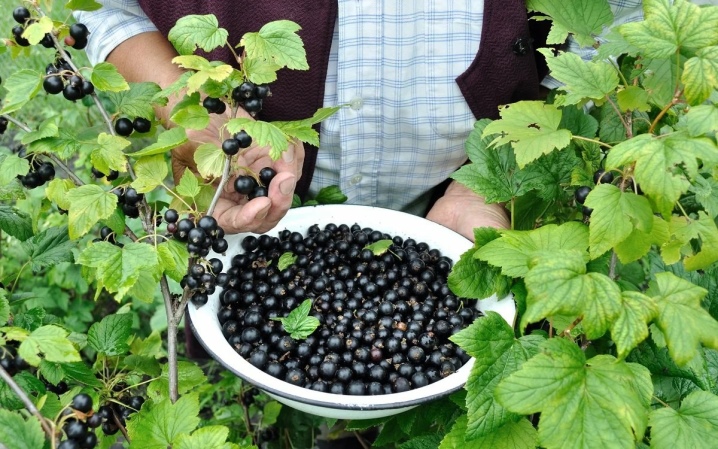













The comment was sent successfully.